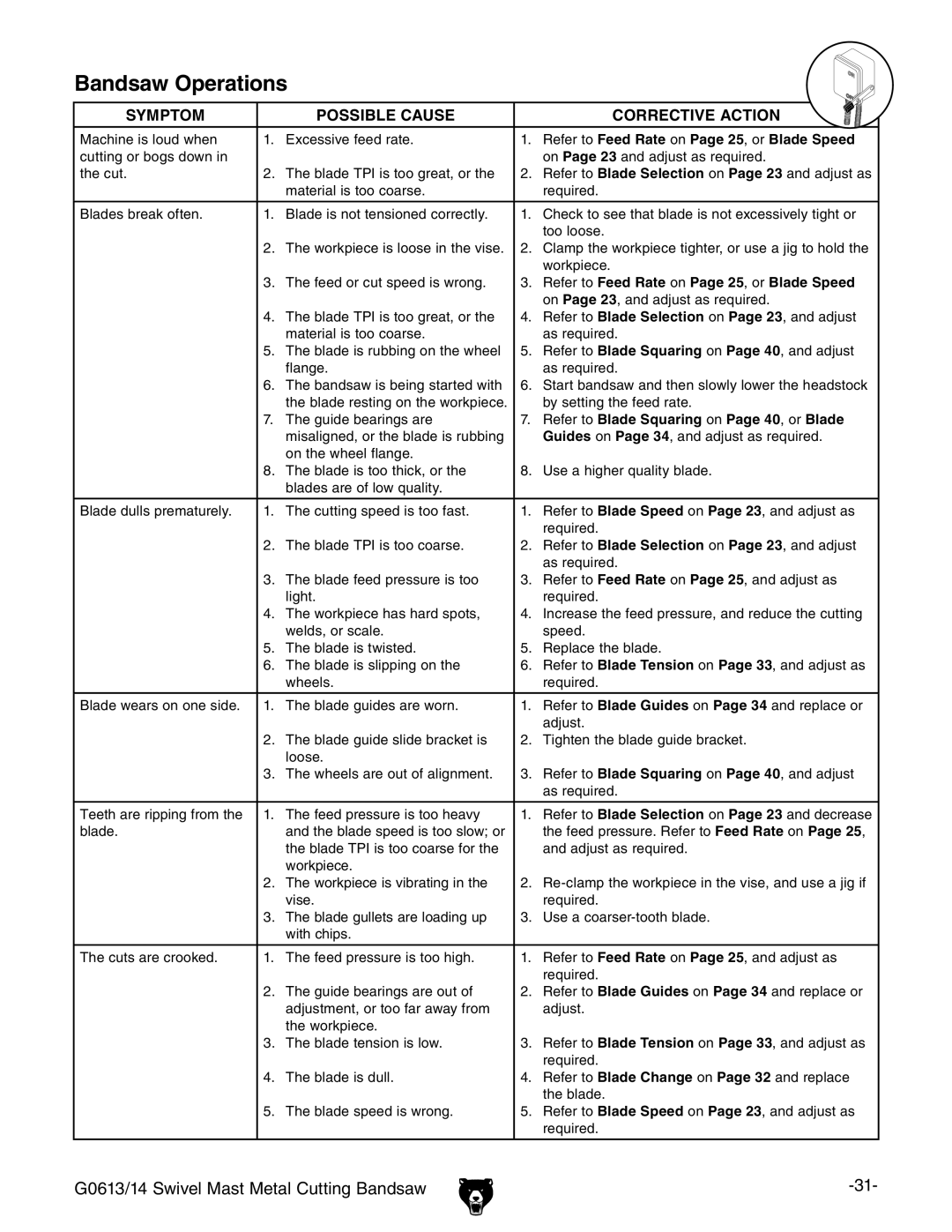G0613/G0614 specifications
The Grizzly G0613 and G0614 are two highly regarded models in Grizzly Industrial's extensive lineup of woodworking machinery, designed for both hobbyists and professional woodworkers. Known for their robust construction and versatility, these machines provide superior performance in various woodworking applications, making them essential tools in any workshop.The Grizzly G0613 is a 15-inch spiral head planer that stands out with its powerful 3HP motor capable of delivering exceptional cutting performance. One of its main features is the spiral cutterhead, which contains a series of sharp, durable carbide inserts that minimize tear-out and produce a smoother finish on the workpiece. This technology not only enhances the quality of the cut but also prolongs the life of the cutterhead, as the inserts can be easily rotated or replaced once they become dull.
In contrast, the Grizzly G0614 is a 12-inch lunchbox planer that excels in portability and ease of use. It is powered by a 2HP motor and features a traditional straight knife cutterhead, making it a reliable choice for those looking for an efficient planer without the excess weight. The G0614 is designed for convenience, boasting a compact size that allows for easy transport between job sites. Both models are equipped with a solid cast iron base that minimizes vibration during operation, ensuring precision and accuracy.
Key characteristics of both the G0613 and G0614 include an easy-to-use height adjustment mechanism, allowing for smooth raising and lowering of the cutterhead to achieve the desired thickness. Additionally, the user-friendly controls are intuitively positioned, making adjustments quick and efficient. The dust collection ports integrated into each machine promote a cleaner workspace by effectively capturing wood shavings and debris during operation.
Moreover, both planers are designed for durability. The heavy-duty construction materials, along with precision-machined parts, ensure that these machines can withstand the rigors of daily use in demanding environments. With a comprehensive warranty and excellent customer service from Grizzly, users can trust these planers to deliver consistent performance over the years.
Overall, the Grizzly G0613 and G0614 are excellent options for woodworkers seeking high-quality planing solutions that combine advanced technology, ease of use, and durable construction. Each model caters to different needs, ensuring that every woodworker can find the right fit for their specific requirements and projects.

